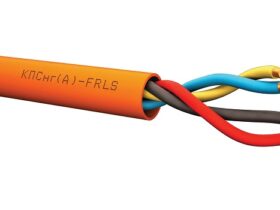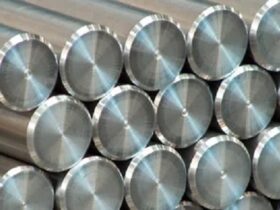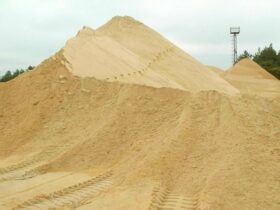HDPE pipes are considered a more modern alternative to metal products and are widely used due to their unique technical characteristics.. Despite the large selection of polymer pipes on the market, not all products meet modern quality standards. How to distinguish a fake and choose a pipe supplier that offers only quality products?
In a short time, polyethylene pipes have become the most popular consumable material for the installation of pipelines for drinking and industrial water, irrigation systems and hermetic shells for communications. The main advantages of HDPE pipes are low weight, ease of installation, service life up to 50 years, relatively low cost, minimal thermal conductivity and resistance to water hammer, low temperatures and chemical agents..
In an effort to meet the growing demand for polyethylene pipes and additional installation accessories (tees, plugs, couplings, etc.), many manufacturers are putting on the market products that do not meet GOST standards and accepted quality standards. Today, the production of PE pipes is regulated in accordance with GOST 18599-2001, however, the absence of a centralized quality control system leads to the appearance of a large number of products with hidden defects..
What affects the quality of HDPE pipes?
Given the relative simplicity of the production technology, additional factors have the greatest impact on the quality of polymer products — the class of raw materials used, equipment on the production line, as well as the quality control system..
Raw materials
On the territory of Russia, two grades of polyethylene are allowed to be used for the production of HDPE pipes — PE 100 and PE 80. The cost of raw materials, depending on the supplier, fluctuates very slightly, therefore, HDPE pipes are 10-15% cheaper than similar products from other manufacturers are likely to be made from low-quality polyethylene.
When purchasing raw materials from a foreign brand, the manufacturer must be provided with European quality certificates indicating the basic characteristics of the material: minimum long-term strength (MRS), as well as resistance to slow and rapid crack propagation (ESCR and RCP).
Equipment
The equipment that the polyethylene pipe plant is equipped with largely determines the quality of the manufactured products. Modern extrusion machines not only have increased productivity, but are also equipped with computer control and electronic instruments for measuring pipe thickness. However, a number of Russian enterprises still continue to use outdated extrusion equipment produced in the 1980s and 1990s. Due to the increased wear of the working elements of the extruder, the thickness of the pipe turns out to be uneven, and the product itself may have a number of internal defects (cavities, irregularities, thickenings).
Quality control
The presence of its own technical control department is a prerequisite for any large manufacturer of HDPE pipes. The main task of the quality control department employees is visual and measuring verification of the pipe characteristics and their comparison with the indicators specified in the normative documentation for the goods. Private entrepreneurs often abandon their own technical control department to reduce production costs, which is why the percentage of defective products is very high..
A significant advantage of the manufacturer is the presence of its own testing laboratory, which allows not only to assess the quality of the goods visually, but also to check additional pipe indicators (elongation at break, yield strength, etc.).
How to choose a supplier of HDPE pipes?
The main feature of a conscientious manufacturer is absolute transparency in all aspects of customer relations. When choosing a brand of HDPE pipes, it is reasonable to give preference to large brands with their own production site, providing complete information about their products. When choosing a supplier, the following aspects should be checked:
Availability of permits for the production and release of HDPE pipes of the corresponding class. At the moment, the procedure for obtaining a certificate is not mandatory, but all large factories go through it to improve their status in the market;
Availability of a quality certificate for the raw materials used. Most manufacturers provide complete information on the types of raw materials used on their official websites;
The possibility of a personal visit to the production site. Production tours offered at all major factories allow you to evaluate the equipment and raw materials used with your own eyes, as well as to make sure that there is a testing laboratory..
Necessary documentation for HDPE pipes
Quality passport (required), includes information about the manufacturer brand, batch of goods, product class, laboratory test results, provided with an individual number, signature of a plant employee and a wet seal;
The quality certificate of raw materials (on request), in addition to data on the type of polyethylene used, must indicate its color (black, blue, yellow);
Laboratory test report (on request), includes data from tests produced with samples from a specific batch of goods. The test date must be between the dates of issue and shipment..
How to evaluate the quality of HDPE pipes yourself?
The main signs of poor quality products can be noted during visual inspection of the pipe. Products manufactured in accordance with GOST standards must have:
Clear marking, duplicating the basic information from the quality passport (data on the manufacturer, pipe brand, date of manufacture, batch number, etc.);
Perfectly smooth inner and outer surface, the material at the ends of the product must be homogeneous and free of inclusions.
After acceptance of the goods, randomly selected samples must be measured using a micrometer and a tape measure — the average pipe diameter and average wall thickness should be within the limits specified in the regulatory documents for the product. It is also recommended to test the pipe with a tensile testing machine. Elongation-at-break testing provides a lot of valuable information about the quality of the material used and is especially necessary in cases where a large volume of polyethylene pipes is purchased..
In the event that the pipes and pipe accessories supplied by HDPE have found defects or are supplied with incomplete documentation, the client has the right to demand from the supplier to replace the goods, and in case of refusal — to immediately report the violation to the state quality control authorities.
The article was prepared with the informational support of the Geo-Alliance company
Original material on the company’s website: / documentation / metodika_vybora_polietilenovyh_trub /

















Оставить коммент.